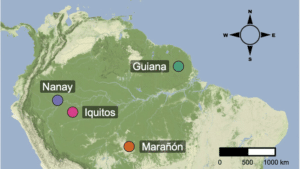The development and future of human civilization is intrinsically linked to our ability to produce food efficiently. Innovation is critical to address the challenges of a growing population and an Earth facing increasing pressures. For thousands of years, farmers have been focused on improving their crops.
It started with simply saving the seed from their best crops for the next season to improve their odds of continuing fruitful harvests. It then evolved with the 19th century work of Gregor Mendel demonstrating the fundamental laws of inherited traits which led to advancements in plant breeding over the next century. The late 20th century ushered in the era of modern biology, with our understanding of the genetic mechanisms and DNA sequences affecting crop performance, accelerating plant breeding even further. Plant breeding ultimately entered the digital age in the 21st century, with powerful computing and data analysis tools enabling breeders to advance new innovations through digital approaches.
This evolution from phenotypic to molecular to digital and predictive breeding approaches allows for the introduction of new higher performing varieties of seeds at a faster rate than at any time in human history.
Phenotypic breeding: Field Based
For centuries, yield improvement was gained by selecting the best seeds from the previous harvests. As plant breeders entered the equation, this became a more scientifically guided approach, but still required that the breeder make their selections from how the crop performed in the field.
Phenotypic breeding brought obvious crop improvements but was time consuming and labor intensive. Breeders were at the mercy of the biological constraints of the crop and suffered from widely varying environmental conditions from growing season to growing season, which made controlled experiments more difficult and limited the rate of genetic gain.
Molecular Breeding: Laboratory Based
With the advent of modern biology and the vast acceleration in the understanding of how genes function, a new era of molecular breeding was ushered in by the scientific and agricultural industries during the latter part of the 20th century. For the first time, breeders could make decisions based on laboratory data, rather than having to test all of their materials under growing conditions.

Molecular markers (akin to highway signs and mileposts in the plant genome) were developed which helped predict whether a plant harbored a particular trait or characteristic that would be beneficial for the crop over the long term. Use of molecular markers and DNA-based data allowed for fewer and more promising entries to be tested via phenotypic selection, accelerated the rate of innovation, and reduced the time required to introduce new varieties.
Both phenotypic and molecular breeding are predicated on the breeder having access to a source of genetic variation that contains beneficial traits of interest. This variation could come from two sources: natural variants, where a favorable trait is present in a certain variety, and mutagenesis which aims to create more variants.

The search for natural variants is essentially a scavenger hunt among as diverse a gene pool as possible across a specific type of crop. For certain traits of interest to the agricultural community, adequate natural variation does not exist or is very difficult to find. This created the need to develop novel genetic diversity with mutations. These are created through chemical or radiation-based treatments, techniques employed since the middle of the 20th century. In this scenario, mutagenesis could be used to generate genetic variants in a generally random fashion that bestow specific characteristics or traits of interest.
The last decade has brought great progress in a powerful new technology known as gene editing. This platform provides plant breeders with the molecular tools to generate specific genetic variants that bestow specific characteristics or traits of interest that would otherwise need to be discovered as natural variants or generated via mutagenesis. This allows breeders to generate this variation in a faster and more targeted means. Single genes or genes involved in specific biochemical or physiological pathways could now be targeted to create variants that drive genetic improvement of a crop or deliver on a novel product concept. These powerful processes allowed for an even faster rate of innovation and delivery of new products to the marketplace than ever before. The limitation is that the variation remains confined to the genetic arsenal of the crop of interest.
No matter how advanced the technologies are to either find or generate genetic diversity, sometimes the solution required simply does not exist within the genetic potential of a crop. This is where biotechnology (i.e., genetically modified organisms or GMOs), the introduction of genetic material into plants from other species, comes into play. This is necessary and powerful when variation within the crops’ genetic portfolio will not deliver the required characteristics or traits of interest. A good example is the introduction of genes from Bacillus thuringiensis (Bt), a natural pathogen of insects, to allow a crop plant to protect itself from insect damage.
The level of efficacy delivered from Bt genes far exceeds the level of control achieved via plant genes or variants of those genes. Insect protected Bt crops are now widely used around the globe in major crops such as corn, cotton and soybean. GMO crops have played a key role in global food security, production continuity, and reduction of pesticide and fuel usage in large-scale agriculture.
Predictive Breeding: Computer Based
The latest evolution in breeding technologies is the move to predictive breeding, basically Silicon Valley meets Salinas Valley. This involves predicting the combined
effects of the genetic composition of a crop. This is the ultimate data-driven approach and allows breeders to move from in-planta (phenotypic) through in-laboratory (molecular) to now in-silico (predictive) breeding approaches. This further accelerates the rate of innovation and reduction in time required to introduce new products. As the human population continues to expand and places immense pressures on global food production, this evolution of breeding technologies will be critical to allow agricultural scientists to meet the needs of a world facing extreme environmental and climatic conditions.
For additional questions and to contact Unfold please contact Kimberly Esterkin, Addo Investor Relations: unfold@addo.com











